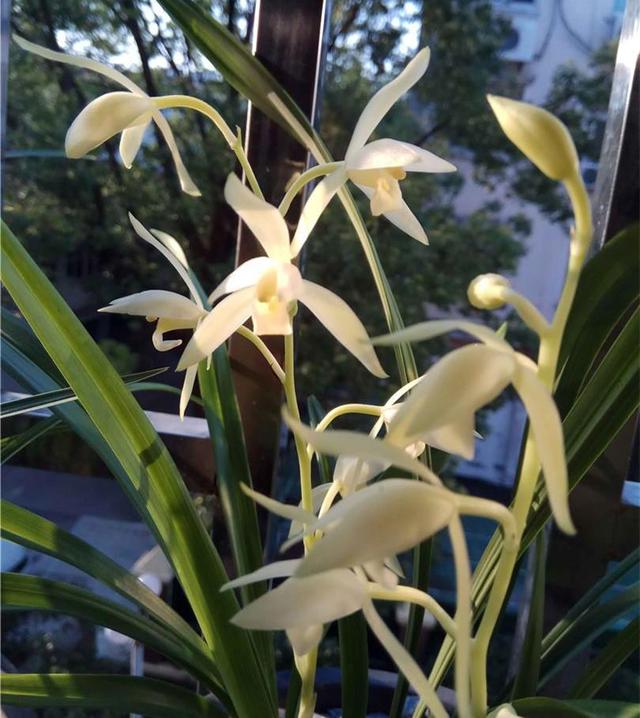
紫藤花是一种充满古典韵味的藤本植物,凭借其优雅的花姿和独特的生长习性,成为庭院与园林中常见的观赏花卉。它的美不张扬,却以垂坠的花穗和清新的香气吸引目光。
Wisteria is a climbing vine that exudesical charm. With its graceful blooms and distinctive growth habits, it has become a popular ornamental plant in courtyards and gardens. This beloved climbing vine captivates not with flamboyance, but with quiet beauty—its cascading blossoms and gentle fragrance leaving a lasting impression on all who encounter it.

紫藤花最显著的特征是它的穗状花序,成串的花朵从枝头垂落,长度可达20-50厘米,远看如同倾泻而下的紫色瀑布。每朵小花呈蝶形,由上下两片花瓣包裹着花蕊,基部略带弧度,形似展翅的蝴蝶。花色以淡紫色为主,也有白色、粉紫色品种,初开时色泽明艳,随着花期推移逐渐转为浅紫。嫩绿的羽状复叶与花穗相映,更显清新。
The most striking feature of the wisteria is its drooping flower spikes—lush clusters that hang from the branches like a purple waterfall, measuring 20 to 50 centimeters in length. Each blossom resembles a butterfly, with upper and lower petals delicately enclosing the stamen, and a slightly curved base that mimics a butterfly’s open wings. While lavender is theic hue, wisteria also graces the landscape in soft whites and romantic pink-purples. As the flowers bloom, their colors glow richly, then fade to a whisper of violet as the days pass. Their beauty is framed by light green, feather-like leaves, which only enhance their refined presence.
每年4月中旬至5月上旬,紫藤花如期开放,盛放时满架紫云,落花时地面铺满紫色花瓣的景象同样动人,但花期仅仅只持续一周左右,十分短暂,因此每到紫藤花开放的时节,总会吸引很多游人打卡驻足。
Wisteria blooms each year between mid-April and early May, transforming trellises and walkways into living cascades of purple. For a brief week, the flowers appear like drifting clouds, and when they fall, the ground is strewn with petals like spilled ink in a dream. The flowering period is fleeting—lasting only about a week—which makes its beauty all the more cherished. During this short time, many visitors flock to witness the spectacle and capture the moment.

紫藤花语包含多重含义:其坚韧的藤蔓象征“不屈的生命力”,缠绵的攀爬姿态衍生出“为情而生,为爱而亡”的深情寓意,而垂坠的花穗则被赋予“守望幸福”的期许。在古代文人笔下,紫藤常被用来隐喻含蓄而持久的情感,现代也引申出“沉迷的浪漫”之意。
The flower language of wisteria carries rich symbolism. Its resilient vines represent unyielding vitality; its entwining, clinging growth evokes the deep sentiment of living and dying for love; and its drooping flower spikes convey a gentle wish for lasting happiness. In ancient Chinese literature, wisteria often symbolized restrained, enduring affection, while in modern interpretations, it has come to represent captivating romance.
责编:武玥



